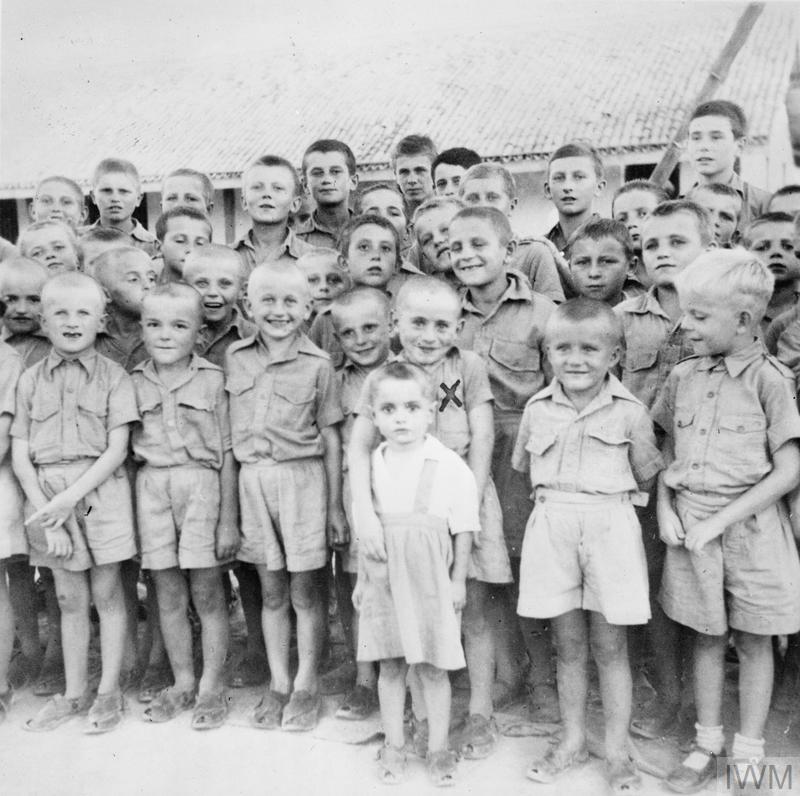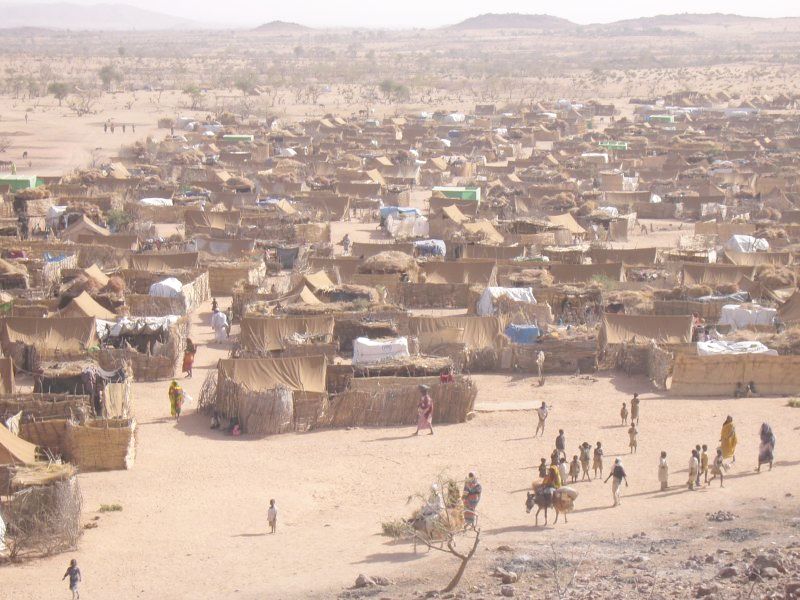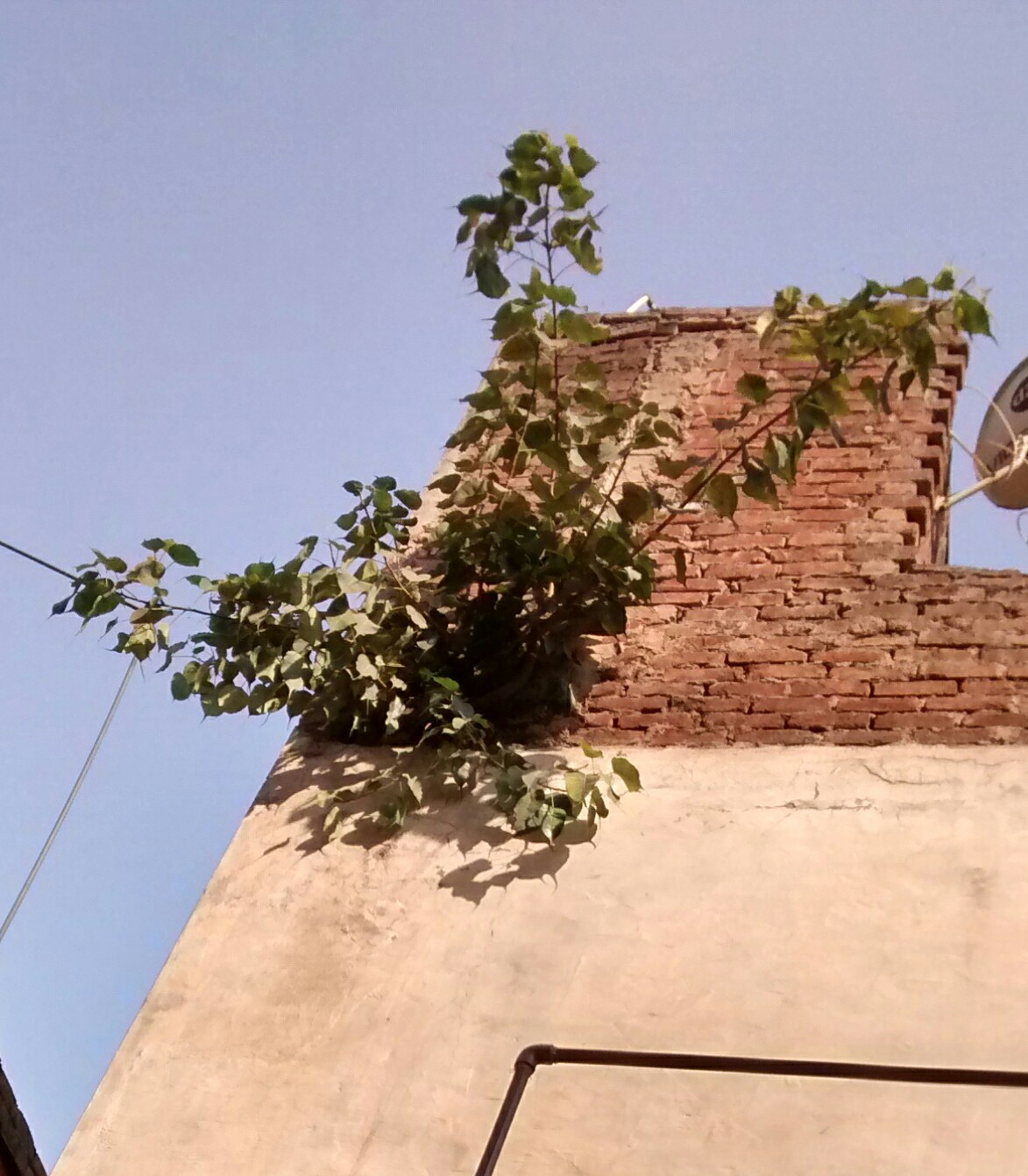|
Balachadi
Balachadi is a village in Jodiya Taluka of Jamnagar district, Gujarat, India. It is 25 kilometres east of Jamnagar, near the Gulf of Kutch. History During the British period, Balachari belonged to the Hadiana sub-division of the Jodiya ''pargana'' under Nawanagar State. The Balachadi Estate was formerly a seaside summer resort that belonged to the rulers of Nawanagar. The estate comprises 426 acres of land. There was a campsite for Polish refugee children of World War II, built by K. S. Digvijaysinhji, Jam Saheb Maharaja of Nawanagar in 1942, near his summer resort. He gave refuge to hundreds of Polish children rescued from Soviet concentration camps. The campsite is now part of the Sainik School. There were other bigger Polish settlements in India at the time in areas such as Valivade and Panchgani in Maharashtra. Valivade was the largest settlement of Polish citizens In India during the war. The Sainik School, Balachadi is the only Sainik School of Gujarat. It was establi ... [...More Info...] [...Related Items...] OR: [Wikipedia] [Google] [Baidu] |
Sainik School, Balachadi
The Sainik School, Balachadi, in Jamnagar, Gujarat, is one of the leading Sainik Schools in the chain of Sainik Schools. It is one of the outstanding boarding schools for public education in Gujarat. It was established in July 1961 by the then Honorable Minister of Home Affairs, Shri Lal Bahadur Shastri. It is an elite English medium, fully residential boarding school for boys and girls, providing premium public education, with a military bias, up to 10+2 stage, as per the Central Board of Secondary Education. Sainik Schools were a dream conceived by V K Krishna Menon, the then Defense Minister of India. The schools are run by the Government of India and managed by the Sainik School Society under the Government of India. The chain of Sainik Schools in India was established with the prime focus of strengthening the Armed Forces, the All India Civil Services IAS and the IPS, besides other fields of public service. Location The school is from Jamnagar, alongside a coastal area ... [...More Info...] [...Related Items...] OR: [Wikipedia] [Google] [Baidu] |
Sainik School
The Sainik Schools () are a system of Military high schools in India established and managed by the Sainik Schools Society () under Ministry of Defence (MoD). They were conceived in 1961 by V. K. Krishna Menon, the then Defence Minister of India, to rectify the regional and class imbalance amongst the officer cadre of the Indian Military. The primary objective of the Sainik Schools is to prepare students academically, mentally and physically for entry into the National Defence Academy (NDA) and Indian Naval Academy (INA). Sainik Schools, along with 1 RIMC and 5 RMS (Rashtriya Military Schools), contribute 25% to 30% officer cadets to NDA and INA. As of 2021, there were 33 Sainik Schools, and MoD will establish 100 more boarding Sainik Schools in public–private partnership (PPP) mode. MoD run Sainik Schools as joint venture with the respective state governments. MoD provides annual funding, and serving officers on deputation to school. State governments provide the land, ... [...More Info...] [...Related Items...] OR: [Wikipedia] [Google] [Baidu] |
Refugee Camps In India
A refugee, according to the United Nations High Commissioner for Refugees (UNHCR), is a person "forced to flee their own country and seek safety in another country. They are unable to return to their own country because of feared persecution as a result of who they are, what they believe in or say, or because of armed conflict, violence or serious public disorder." Such a person may be called an asylum seeker until granted refugee status by a contracting state or by the UNHCR if they formally make a claim for asylum. Internally Displaced People (IDPs) are often called refugees, but they are distinguished from refugees because they have not crossed an international border, although their reasons for leaving their home may be the same as those of refugees. Etymology and usage In English, the term ''refugee'' derives from the root word ''refuge'', from Old French ''refuge'', meaning "hiding place". It refers to "shelter or protection from danger or distress", from Latin ''fugere ... [...More Info...] [...Related Items...] OR: [Wikipedia] [Google] [Baidu] |
Nawanagar State
Nawanagar was an Indian state and then a princely state in the historical Halar region, located on the southern shores of the Gulf of Kutch. It was ruled by the Jadeja Rajput dynasty and became a part of newly formed India. Its capital city was Nawanagar city, now known as Jamnagar. It had an area of and a population estimated at 336,779 in 1901. Its rulers, who use the title of " Jam Saheb" are of the same clan as the Rao of Kutch. They were entitled to a 13-gun salute. The state flag was a rectangular red flag with a white elephant, near and facing the hoist. During the British, the state was part of the Kathiawar Agency, within the Gujarat Division of Bombay Presidency. The state had a pearl fishery and much of its wealth came from this. Nawanagar is also famous for its late ruler Jam Saheb Ranjitsinhji (died 1933), who was a famous cricket player at Cambridge in England and represented England in Test cricket, before his accession to the throne. History Nawana ... [...More Info...] [...Related Items...] OR: [Wikipedia] [Google] [Baidu] |
Memorial Pillar (Valivade)
The Memorial Pillar located in Valivade (a village near Kolhapur, India) is in memory of over 5000 Polish refugees who escaped to India during World War II and were given shelter in the area. Poland's Deputy Foreign Minister Marcin Przydacz unveiled the pillar on 14 September 2019. Valivade was India's largest Polish refugee camp, receiving its first group in June 1943 and caring for families until most returned home in 1948, though some remained permanently. Alongside the pillar, a commemorative museum was planned to house photographs, artifacts and oral histories of camp life, but the site has since suffered from deferred maintenance. Despite its state of neglect, the monument and adjacent cemetery continue to serve as potent symbols of India-Poland solidarity and wartime compassion. History The Memorial Pillar at Valivade was unveiled on 14 September 2019 by Poland's Deputy Foreign Minister Marcin Przydacz in the presence of Poland's Ambassador Adam Burakowski and Maharas ... [...More Info...] [...Related Items...] OR: [Wikipedia] [Google] [Baidu] |
Villages In Jamnagar District
A village is a human settlement or Residential community, community, larger than a hamlet (place), hamlet but smaller than a town with a population typically ranging from a few hundred to a few thousand. Although villages are often located in rural areas, the term urban village is also applied to certain urban neighborhoods. Villages are normally permanent, with fixed dwellings; however, transient villages can occur. Further, the dwellings of a village are fairly close to one another, not scattered broadly over the landscape, as a dispersed settlement. In the past, villages were a usual form of community for societies that practice subsistence agriculture and also for some non-agricultural societies. In Great Britain, a hamlet earned the right to be called a village when it built a Church (building), church. [...More Info...] [...Related Items...] OR: [Wikipedia] [Google] [Baidu] |
Babul (tree)
''Vachellia nilotica'', more commonly known as ''Acacia nilotica'', and by the vernacular names of gum arabic tree, babul, thorn mimosa, Egyptian acacia or thorny acacia, is a flowering tree in the family Fabaceae. It is native to Africa, the Middle East and the Indian subcontinent. It is also considered a ' weed of national significance' and an invasive species of concern in Australia, as well as a noxious weed by the federal government of the United States. Taxonomy This species of tree is the type species of the Linnaean genus ''Acacia'', which derives its name from Greek , ', the name given by early Greek botanist-physician Pedanius Dioscorides to this tree as a medicinal, in his book ''Materia Medica''. The genus ''Acacia'' was long known not to be taxonomically monophyletic, and despite being the type species of that genus, ''A. nilotica'' has since been moved to the genus ''Vachellia'', with the genus name ''Acacia'' being reserved for Australian species; the princip ... [...More Info...] [...Related Items...] OR: [Wikipedia] [Google] [Baidu] |
Shraavana
Śrāvaṇa () is the fifth month of the Hindu calendar. In India's national civil calendar, Śrāvaṇa is the fifth month of the year, typically beginning in mid to late July and ending in late August. In the Tamil calendar, it is known as Āadi and is the fifth month of the solar year. In lunar religious calendars, Śrāvaṇa begins on the new moon (according to the amanta tradition) or the full moon (according to the purnimanta tradition) and is the fifth month of the year. ''Srabon'' (; also spelt ''Sravan'') is the fourth month of the solar Bengali calendar. It is also the fourth month of the Nepali calendar. Śrāvaṇa is also the second month of ''Varsha'' (the rainy season). In the solar Assamese calendar it is the fourth month of the year, and is called ''Xaün''. The month of Shravana is very important for the entire Indian subcontinent, as it is connected to the arrival of the south-west monsoons. For many Hindus, the month of Shravana is a month of fasting ... [...More Info...] [...Related Items...] OR: [Wikipedia] [Google] [Baidu] |
Ficus Religiosa
''Ficus religiosa'' or sacred fig is a species of fig native to the Indian subcontinent and Indochina that belongs to Moraceae, the fig or mulberry family. It is also known as the bodhi tree, bo tree, peepul tree, peepal tree, pipala tree or ashvattha tree (in India and Nepal). The sacred fig is considered to have a religious significance in four major religions that originated on the Indian subcontinent: Hinduism, Buddhism, Sikhism and Jainism. Hindu and Jain ascetics consider the species to be sacred and often meditate under it. Gautama Buddha is believed to have attained enlightenment under a tree of this species. The sacred fig is the state tree of the Indian states of Odisha, Bihar and Haryana. Description ''Ficus religiosa'' is a large dry season-deciduous or semi-evergreen tree up to tall and with a trunk diameter of up to . The leaves are cordate in shape with a distinctive extended drip tip; they are long and broad, with a petiole. The fruits are small ... [...More Info...] [...Related Items...] OR: [Wikipedia] [Google] [Baidu] |
Shiva
Shiva (; , ), also known as Mahadeva (; , , Help:IPA/Sanskrit, [mɐɦaːd̪eːʋɐh]) and Hara, is one of the Hindu deities, principal deities of Hinduism. He is the God in Hinduism, Supreme Being in Shaivism, one of the major traditions within Hinduism. Shiva is known as ''The Destroyer'' within the Trimurti, the Hinduism, Hindu trinity which also includes Brahma and Vishnu. In the Shaivite tradition, Shiva is the Supreme Lord who creates, protects and transforms the universe. In the goddess-oriented Shaktism, Shakta tradition, the Supreme Goddess (Devi) is regarded as the energy and creative power (Shakti) and the equal complementary partner of Shiva. Shiva is one of the five equivalent deities in Panchayatana puja of the Smarta Tradition, Smarta tradition of Hinduism. Shiva has many aspects, benevolent as well as fearsome. In benevolent aspects, he is depicted as an Omniscience, omniscient yogi who lives an Asceticism#Hinduism, ascetic life on Kailasa as well as a house ... [...More Info...] [...Related Items...] OR: [Wikipedia] [Google] [Baidu] |
Linga
A lingam ( , lit. "sign, symbol or mark"), sometimes referred to as linga or Shiva linga, is an abstract or aniconic representation of the Hindu god Shiva in Shaivism. The word ''lingam'' is found in the Upanishads and epic literature, where it means a "mark, sign, emblem, characteristic", the "evidence, proof, symptom" of Shiva and Shiva's power. The lingam of the Shaivism tradition is a short cylindrical pillar-like symbol of Shiva, made of stone, metal, gem, wood, clay or precious stones. It is often represented within a disc-shaped platform, the '' yoni'' – its feminine counterpart, consisting of a flat element, horizontal compared to the vertical lingam, and designed to allow liquid offerings to drain away for collection. The ''lingam'' is an emblem of generative and destructive power. While rooted in representations of the male sexual organ, the ''lingam'' is regarded as the "outward symbol" of the "formless reality", the symbolization of merging of the 'primordial ... [...More Info...] [...Related Items...] OR: [Wikipedia] [Google] [Baidu] |
Yadava
The Yadava (), not to be confused with Yadav, were an ancient Indian people who believed to have descended from Yadu (legendary king), Yadu, a legendary king of Chandravamsha lineage. The community was formed of various clans, being the #The Satvatas, Satvatas, Andhakas, Bhoja tribe, Bhojas, #The Kukuras, Kukuras, Vrishni, Surasena, Surasenas, and Abhira tribe, Abhira who all worshipped Krishna. They are listed in ancient Indian literature as the segments of the lineage of Yadu (''Yaduvamsha'').Thapar, Romila (1978, reprint 1996). ''Ancient Indian Social History: Some Interpretations'', New Delhi: Orient Longman, , p. 223. Amongst the Yadava clans mentioned in ancient Indian literature, the Haihayas are believed to have descended from Sahasrajit, elder son of YaduPargiter, F. E. (1972) [1922]. ''Ancient Indian Historical Tradition'', Delhi: Motilal Banarsidass, p. 87. and all other Yadava clans, which include the Cedī (tribe), Chedis, the Vidarbha kingdom, Vidarbhas, the Sa ... [...More Info...] [...Related Items...] OR: [Wikipedia] [Google] [Baidu] |







